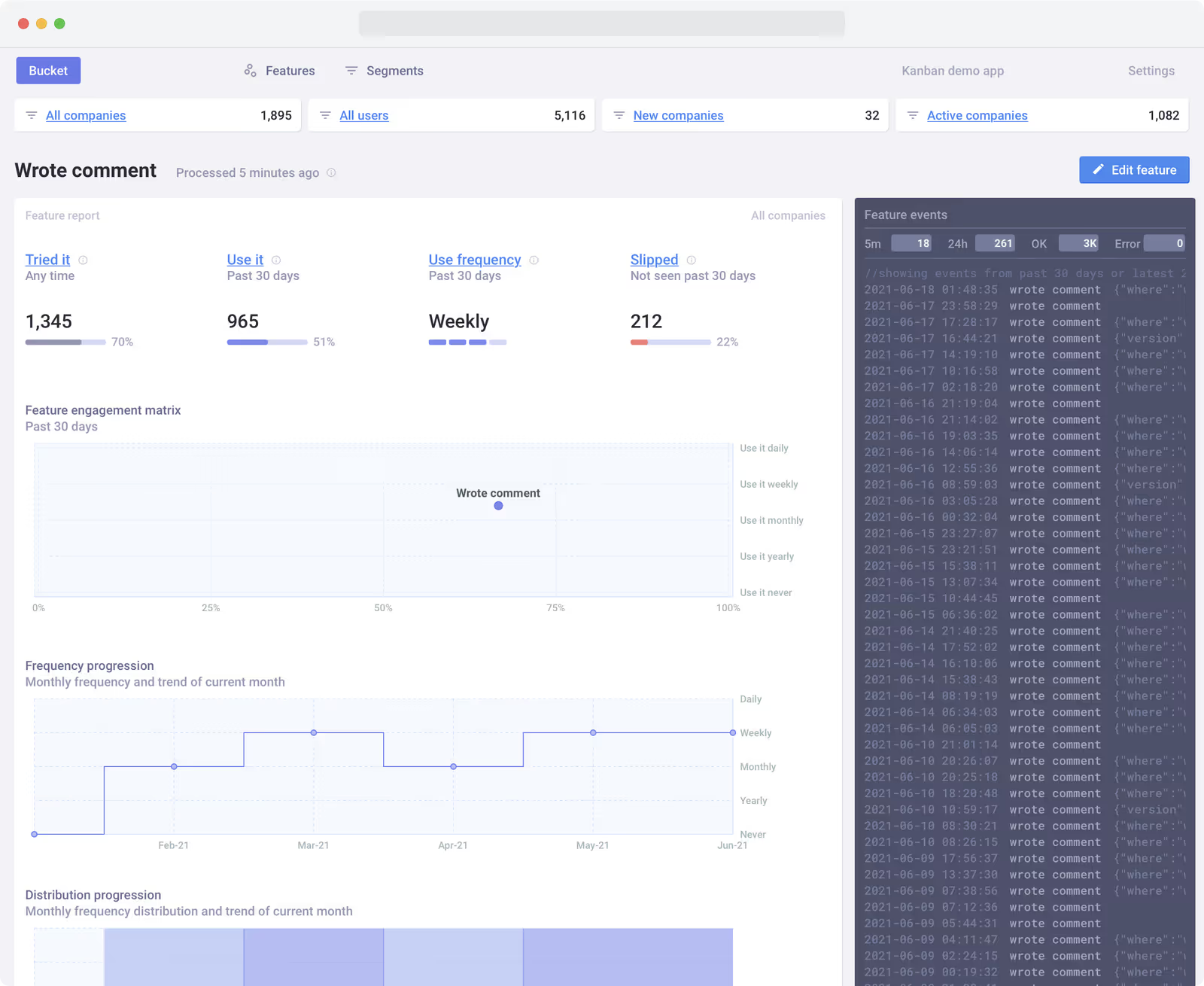Bucket 1.0
They say that if you’re not embarrassed about the initial release of your product, you’ve released it too late. The first version of Bucket was released on Feb 17, 2021. It was decent and its direction was the right one, but so much has happened since then. I don’t know if I was embarrassed about the first version, but it sure was a lot less mature compared to Bucket 1.0, which has just been released today!
Here’s the three key features of Bucket 1.0:
A home for the feature, finally
Software teams spend a lot of time discussing, planning, designing and building features. But what happens after the feature is shipped? It gets buried in product analytics. That’s not right. Significant features take a lot of hard work from idea to release, and they easily cost +$50k to produce. Features should be tracked somewhere dedicated to feature success. The team that built and owns the features should have a dedicated feature dashboard, so they can easily tell if the feature is getting the engagement they aimed for prior to releasing it.In a nutshell, this is what Bucket does. Bucket is the simplest way to track feature success.

Feature stickiness per customer
Any significant feature should include a target audience and engagement goal as part of its specification. That’s because most features aren't meant for all of your users. One feature might be critical for onboarding new user signups while another feature is intended to retain larger customers.
Other tools allow you to set attribute flags on customers to indicate, if they have tried a particular feature or not. Bucket goes way deeper and allows you to segment your customers by how often they use a particular feature. For example, with a single click, you can get a list of customers that use your new integration feature every day/week/month or year.
Additionally, you can also filter on custom attributes, like their monthly spend or where they are located.

Instant feature audit for planning
Sadly, most new features don’t hit their target audience or engagement goals in the first go. It often takes many attempts to get a feature right. Getting it right might require improvements to the product design, the onboarding, the awareness, etc. To avoid features (and the $50k it cost!) being wasted, feature owners and managers need to allocate time to iterate on their features until they get it right.
The feature audit matrix gives teams an instant overview of how the various features are performing. This view is great for planning the next cycles. Should the team grab a new item on the backlog, or iterate on one of the features that aren’t doing very well?

Try for free
If Bucket sounds useful, give it a try for free.